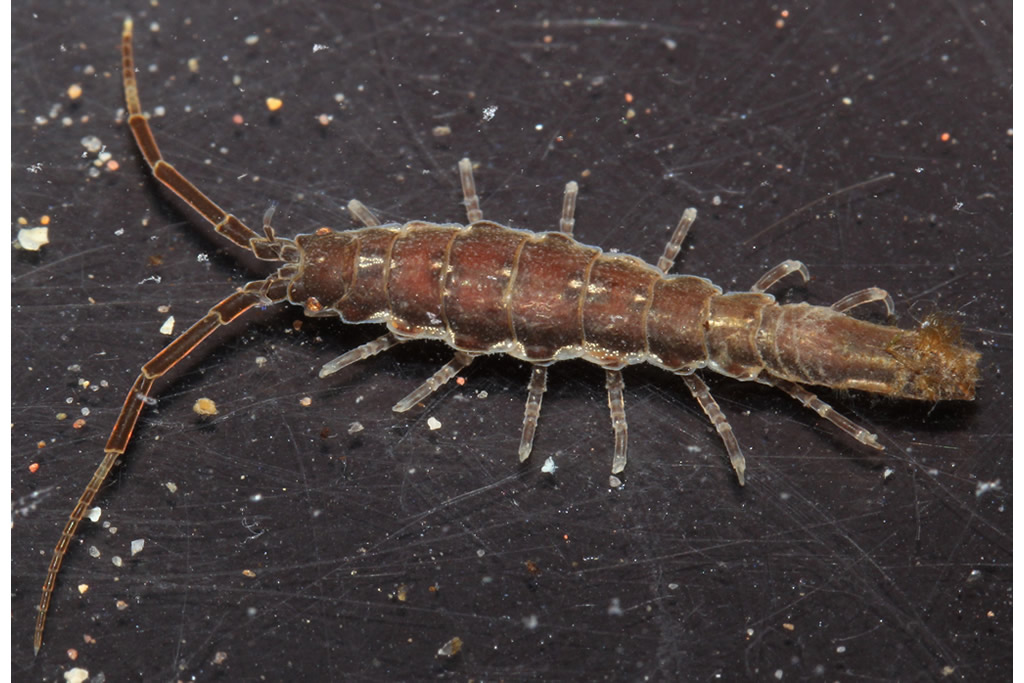Idotea linearis (Linnaeus, 1766)
Status:
Native
ID Difficulty
Identification
Idotea are relatively large, conspicuous and common marine isopods with oval or oblong bodies. Although they often have striking colours and patterns, these are not particularly useful for distinguishing between the various species. Rather, identification should be based on characteristics of the antennae, the coxal plates and the pleotelson.
Males of I. linearis grow up to 40 mm in length, whilst females are smaller. The species has an elongated, oblong shape with an emarginate tip to the pleotelson (younger individuals may have a medial tooth). The antennae are long and the antennule extends beyond the second segment of its peduncle. The coxal plates are small and do not extend from the front to the back of any of the pereonites. Green or brown body colouring sometimes with pale marks.
Distribution and Habitat
Recorded all around the shores of Britain and occasionally of Ireland. It is mainly a sublittoral species but may be encountered in shallow water at low (spring) tides on sandy shores, swimming freely or, more commonly, clinging to fine seaweeds (especially those attached to the seabed, such as Scytosiphon lomentaria and Ceramium sp.) or Zostera (Eelgrass).
A guide to finding Idotea linearis is available in BMIG Newsletter 46 (pg.9).
References
Naylor, E. & A. Brandt. 2015. Intertidal Marine Isopods. Synopses of the British Fauna (New Series), No. 3. Field Studies Council, for The Linnean Society of London.






